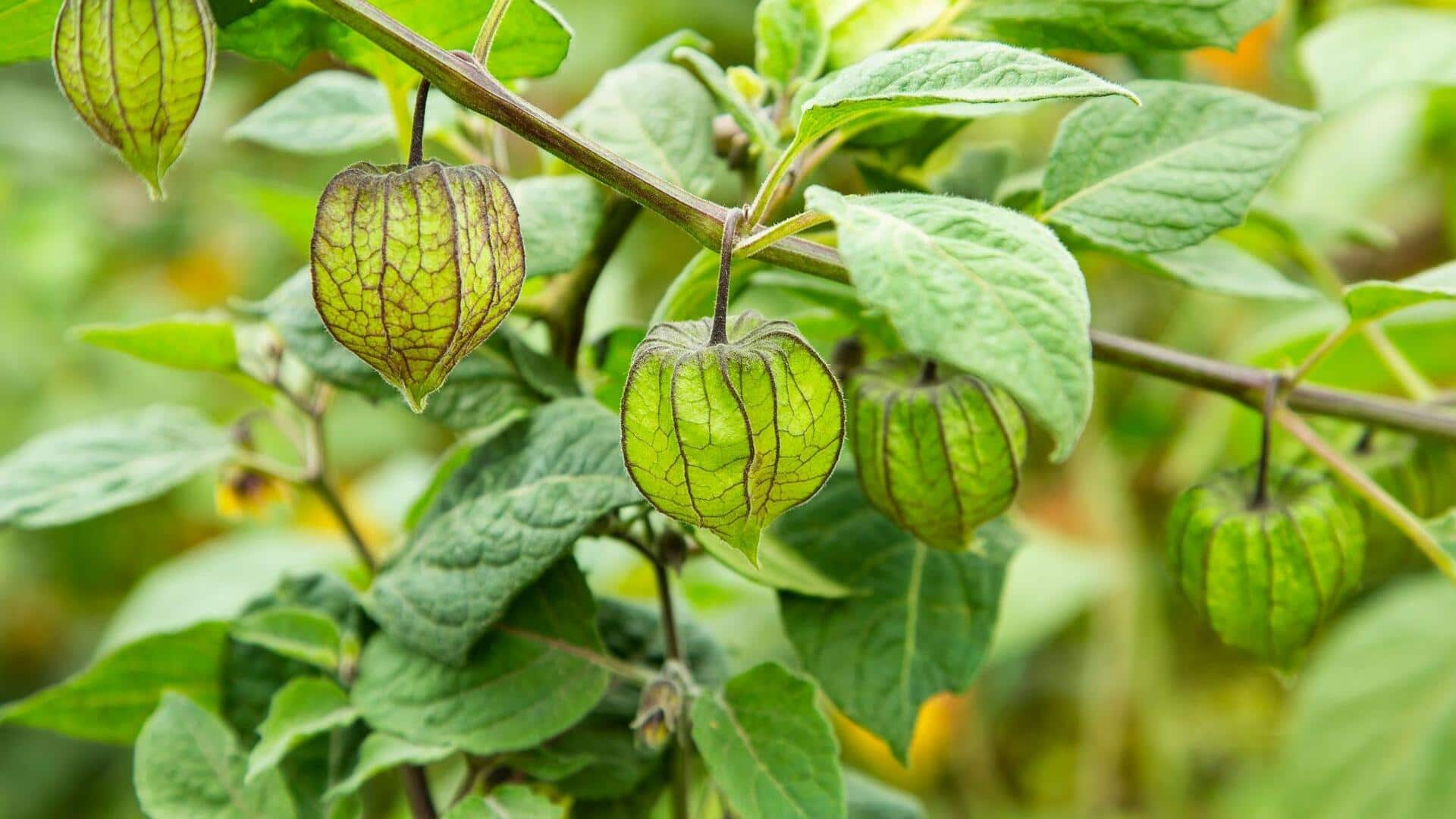
How to grow Cape gooseberry at home
What's the story
Cape gooseberry, a small, tangy fruit, is a delight for many. Growing this plant at home can be rewarding, giving you fresh fruits right from your garden. With the right conditions and care, you can grow cape gooseberry successfully. Here's how to grow this plant at home, from soil requirements to watering techniques, and sunlight needs, everything you need to know.
Tip 1
Choosing the right soil
Cape gooseberries prefer well-draining soil with a pH level between six and seven. Sandy loam is ideal as it retains moisture without becoming waterlogged. Before planting, amend the soil with organic matter such as compost to improve fertility and structure. This will help the plant establish strong roots and produce healthy fruits.
Tip 2
Planting techniques for success
Start by planting cape gooseberry seeds indoors about eight weeks before the last frost date. Once seedlings have developed two sets of leaves, transplant them outdoors into prepared beds or containers. Space plants about three feet apart to allow for their sprawling growth habit. Ensure that they are planted at the same depth as in their original containers.
Tip 3
Watering practices for optimal growth
Regular watering is key to keeping cape gooseberry plants healthy. Water them deeply once a week, more often in hotter months, to keep the soil moist but not soggy. Mulching around the plants retains moisture and keeps weeds at bay. Make sure not to overwater, as it can lead to root rot.
Tip 4
Sunlight requirements for healthy plants
Cape gooseberries flourish in full sun, which is at least six hours of direct sunlight every day. Pick a spot that gets plenty of sunlight throughout the day. If you're growing indoors, keep them near south-facing windows or use grow lights for adequate illumination.
Tip 5
Fertilization tips for better yields
To ensure healthy growth and abundant fruiting, fertilize cape gooseberry plants every four to six weeks with a balanced fertilizer with equal parts nitrogen, phosphorus, and potassium (NPK). This will promote robust foliage development and enhance fruit production without causing excessive leaf growth at the expense of fruiting.